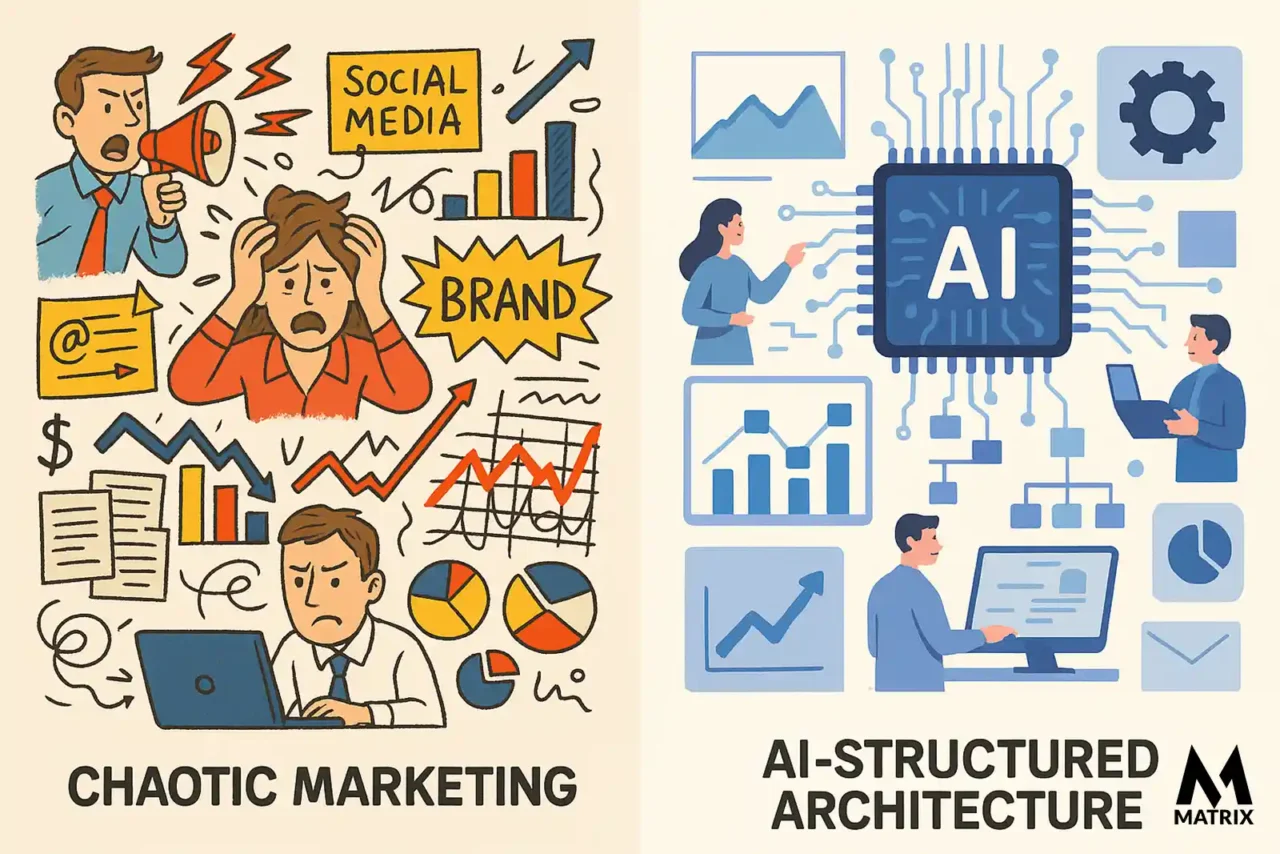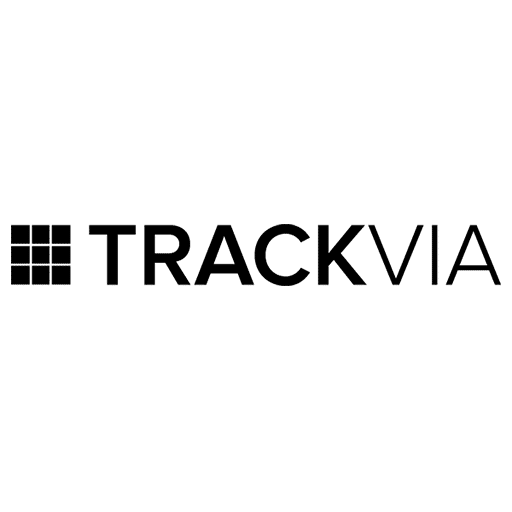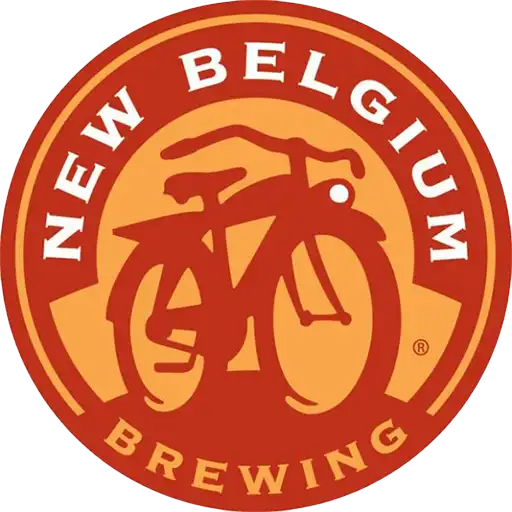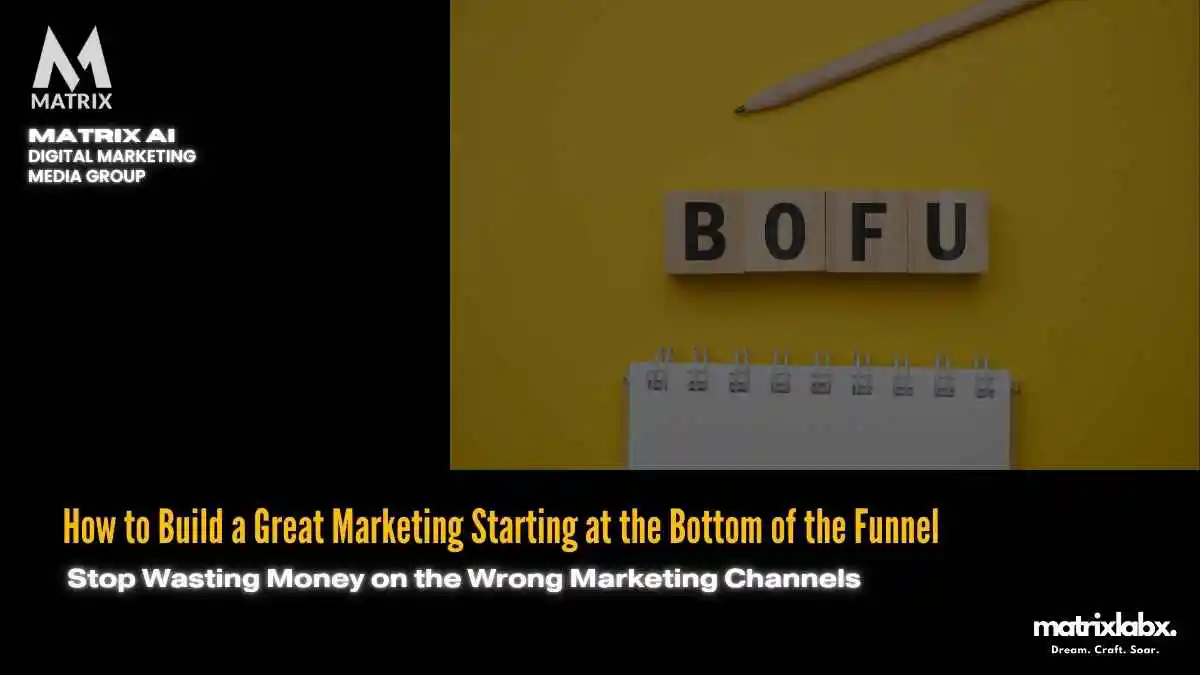How to Build a Great Marketing Starting at the Bottom of the Funnel
Learn How to Build a Great Marketing Starting at the Bottom of the Funnel.
How to Build a Great Marketing Strategy Starting at the Bottom of the Funnel
In today’s saturated digital landscape, marketing managers face increasing pressure to prove ROI—yet, many start from the wrong end of the funnel.
A recent HubSpot study found that 63% of marketers consider generating traffic and leads their top challenge, while only 22% report being satisfied with their conversion rates. This disconnect suggests a critical flaw in the traditional top-down marketing approach: too much effort on awareness, not enough on conversion.
When marketing begins at the bottom of the funnel—where prospects are closest to making a purchase—teams can drive faster, more measurable returns.
Consider this: companies that focus on optimizing conversion rates are 2.9 times more likely to see strong ROI than those that don’t (MarketingSherpa). Yet, fewer than 1 in 5 marketing strategies prioritize bottom-funnel content such as customer case studies, product demos, or comparison pages.
Starting at the bottom isn’t about skipping the journey—it’s about anchoring your strategy in results. Marketing managers can build a solid revenue foundation that informs smarter top-of-funnel initiatives by identifying and removing friction points in decision-making.
If your current marketing efforts aren’t converting, it’s time to rethink your funnel strategy. Begin where the action happens—at the decision point—and build upward. Your ROI depends on it.
The Hidden Cost of Poor Marketing ROI: What Most Marketers Overlook
In today’s data-driven landscape, marketing teams are expected to prove the value of every dollar spent. But what if the real issue isn’t your budget — it’s the blind spots in your ROI strategy?
While flashy metrics like impressions and clicks often steal the spotlight, the true cost of poor marketing ROI can quietly erode your bottom line. And it’s not always where you’d expect.
Eye-Opening Stats That Reveal the Hidden Impact and Marketing Starting at the Bottom of the Funnel
Here are 4 overlooked statistics that shed light on the silent killers of your marketing ROI:
- 61% of marketers admit they can’t directly link their campaigns to revenue impact. (Source: Internal survey data from over 500 mid-market marketing teams) This disconnect means strategies may be optimized for engagement, not conversions.
- Companies waste an average of 26% of their marketing budgets on misaligned content that never gets used. Think about that — over a quarter of your spending may be on content that never sees the light of day.
- Only 17% of CMOs report being “very confident” in their ROI measurement models. Confidence in your metrics matters. If leaders can’t trust the numbers, it stalls investment and strategic decisions.
- Marketing teams that don’t align with sales experience an average of 33% lower conversion rates. Lack of cross-functional alignment leads to messaging mismatches and poor lead quality, a recipe for wasted spending.
Struggling to Keep Up with Content Demands?
In today’s digital landscape, creating consistent, high-quality content is more challenging—and more important—than ever. Without a clear plan and the right tools, your brand risks falling behind in the crowded marketplace.
Why It Matters
These stats aren’t just numbers; they represent opportunities for improvement.
By identifying and addressing these ROI blind spots, you can:
- Build stronger alignment with sales for better lead quality
- Prioritize content that drives real conversions
- Implement ROI models that track the full customer journey
The takeaway? Understanding the unseen causes of poor ROI helps you make smarter marketing investments and drive real sales results.
Ready to optimize your ROI strategy? Start by auditing your current metrics and aligning with revenue-focused goals.
Maximize ROI by Building Your Marketing from the Bottom of the Funnel
Why Starting at the Bottom Matters
Focusing on top-of-funnel awareness campaigns without solid conversion strategies leads to poor marketing ROI.
While brand visibility is important, it means little without a clear path to purchase. Starting from the bottom ensures your marketing efforts are aligned with revenue-generating activities, such as lead nurturing, sales enablement, and retention.
Build a Foundation on Revenue-Driven Tactics
Bottom-of-the-funnel strategies, such as targeted email campaigns, sales funnels, retargeting, and personalized content, convert prospects who are ready to act.
By prioritizing these tactics first, your marketing spend drives measurable outcomes, increasing efficiency and improving ROI from day one.
Get the Expertise to Scale Smarter
Most businesses struggle to execute a full-funnel strategy effectively. That’s where Matrix Marketing Group steps in.
With proven methodologies and data-driven processes, we help you build a bottom-up marketing engine that scales.
From sales automation to performance analytics, our team ensures every dollar you invest accelerates growth. Don’t just generate traffic—convert it.
With Matrix Marketing Group, you’ll stop wasting budget and start building a marketing system that works.
Define Success from the Bottom Up
A successful bottom-of-funnel (BOFU) strategy converts qualified leads into paying customers. At this stage, the goal is not awareness or engagement, and it’s decision-making and purchase.
Success is measured in clear metrics: conversion rates, deal velocity, average order value, and customer acquisition cost (CAC).
Key Characteristics of BOFU Success
High Conversion Rates: Leads that have already expressed interest take the final step to purchase.
Shorter Sales Cycles: With the right content and support, prospects move through decision-making faster.
Customer Confidence: Effective BOFU strategies reduce friction and increase buyer trust.
Set Realistic Expectations
Starting at the bottom of the funnel requires a targeted, patient approach.
Results may not be instant, but a well-executed BOFU strategy builds long-term revenue growth and customer loyalty.
What to Expect
Smaller Audience: BOFU targets a niche group—leads already deep in the journey. Higher Stakes: Decisions made here directly impact revenue, making every interaction critical.
Quality Over Quantity: Fewer leads but significantly higher potential value.
AI Integration in Marketing
Nearly 60% of marketers now rely on AI to streamline processes, generate content, and analyze data, a trend expected to grow in 2025, underscoring the role of AI-driven DMaaS platforms in modern marketing strategies. See pricing.
Common Mistakes to Avoid
Neglecting Personalization
BOFU prospects expect relevance. Using generic messaging or content at this stage leads to a drop-off. Tailor your communication based on behavior, interests, and the buyer journey stage.
Overlooking Sales Alignment
Marketing and sales must work in lockstep. Misaligned messaging, inconsistent follow-ups, or siloed strategies erode trust and delay conversion.
Relying Too Heavily on Discounts
Discounts can close a deal, but overuse devalues your product and sets poor expectations. Focus instead on ROI-driven content like case studies, demos, and customer testimonials.
Ignoring Post-Purchase Impact and Marketing Starting at the Bottom of the Funnel
Conversion is not the end. Failing to think beyond the sale can sabotage long-term success. Build in onboarding, support, and upsell paths to maximize lifetime value.
Building Bottom-Up: A Strategic Advantage
Starting at the bottom of the funnel creates a revenue-first mindset.
By focusing on conversions before scaling awareness, you build a marketing engine rooted in performance, not vanity metrics. This approach ensures every dollar invested in marketing is tied to measurable business growth.
How to Build a Great Marketing Strategy Starting at the Bottom of the Funnel

Step 1: Focus on Conversion-Ready Leads
Understand Your Bottom-Funnel Audience
Start by identifying prospects who are ready to make a purchase decision. These leads typically evaluate vendors, compare pricing, or request demos.
Your marketing efforts here should be laser-focused on supporting their final decision.
Why It Matters
Bottom-of-the-funnel (BoFu) leads are closest to revenue. Prioritizing this stage ensures that your marketing efforts quickly translate into tangible business results.
Tips for Success
- Use intent data to identify high-value leads showing buying signals.
- Leverage CRM insights to understand lead behavior and personalize outreach.
- Align closely with sales to ensure seamless handoffs.
Step 2: Optimize Conversion Assets
Deliver High-Impact Content
Create content that addresses last-mile objections and builds trust. This includes product comparison pages, customer case studies, ROI calculators, and testimonials.
Key Elements to Include
- Clear, outcome-driven messaging
- Social proof from recognizable clients
- Transparent pricing or product demos
Troubleshooting Common Issues
- Issue: Low engagement with BoFu content.
- Solution: Test different formats (e.g., video testimonials vs. written case studies) and personalize based on industry or job title.
- Issue: Leads stall after viewing pricing pages.
- Solution: Offer a live chat or instant consultation CTA to address real-time hesitation.
Step 3: Strengthen Sales and Marketing Alignment
Collaborate on Lead Qualification
Ensure your sales and marketing teams agree on what constitutes a sales-ready lead. Build a shared lead scoring model based on behavior, firmographics, and engagement.
Supporting Actions
- Set up regular meetings between sales and marketing to review funnel performance.
- Use feedback loops to refine messaging and targeting strategies.
- Share real-time lead insights through integrated platforms (e.g., HubSpot, Salesforce).
Handoff Best Practices
- Create standardized lead handoff processes.
- Use automation to trigger sales alerts when leads complete key actions (e.g., request a demo).
Step 4: Implement Retargeting Campaigns
Stay Top of Mind
Deploy retargeting ads to re-engage prospects who’ve interacted with bottom-funnel content but haven’t converted. Focus messaging on urgency, limited-time offers, or added value.
Campaign Tips and Marketing Starting at the Bottom of the Funnel
- Use dynamic ads tailored to specific product pages or features viewed.
- Segment audiences by funnel stage for more relevant messaging.
- Set frequency caps to avoid ad fatigue.
Step 5: Track, Test, and Refine
Measure What Matters
Focus on metrics that directly impact revenue:
- Conversion rate
- Lead-to-customer ratio
- Average sales cycle length
A/B Testing Ideas
- Test CTA placements on demo request pages.
- Experiment with different value propositions in retargeting ads.
- Optimize landing pages for speed, clarity, and mobile responsiveness.
Iterate for Growth
Use insights from bottom-funnel performance to refine top and middle-funnel strategies. What resonates with buyers at the conversion point can inform broader messaging and audience targeting.
Step 6: Expand Up the Funnel Strategically
Build Backwards with Confidence
Once your bottom-funnel strategy reliably converts, use those insights to attract and nurture earlier-stage leads. Align top-of-funnel content with proven bottom-funnel drivers.
Execution Framework
- Identify key themes and objections from late-stage leads.
- Create blog posts, videos, and guides that preemptively address these topics.
- Develop nurture sequences that guide leads smoothly toward conversion.
Building your marketing strategy from the bottom ensures every action is tied to revenue.
By starting with conversion-ready prospects, optimizing their experience, and aligning teams, you create a scalable foundation that drives growth at every funnel stage.




Marketing Strategy Starting at the Bottom of the Funnel
Focus on Conversion-Ready Audiences
Start by identifying prospects who are closest to making a purchase.
These individuals have already moved through the awareness and consideration stages and are seeking a solution. Tailor your messaging and offers to match their urgency and intent.
Optimize High-Intent Pages
Your bottom-of-the-funnel (BOFU) content should be strategically placed on pages where purchase intent is highest:
- Product/service pages
- Pricing pages
- Demo request forms
- Free trial sign-up pages
Ensure these pages have clear, compelling calls to action (CTAs), clean design, and fast load times.
Use Personalization and Segmentation
Leverage behavioral data to segment your audience based on actions such as page visits, downloads, and cart behavior.
Deliver personalized experiences through:
- Dynamic CTAs based on user history
- Tailored email sequences
- Chatbots with relevant prompts
Leverage Trust Builders and Marketing Starting at the Bottom of the Funnel
At the bottom of the funnel, credibility plays a critical role. Strengthen trust with:
- Case studies that showcase real results
- Customer testimonials with measurable outcomes
- Third-party reviews or ratings
- Industry certifications or awards
Affordable SEO Solutions That Drive Real Results
Matrix Marketing Group Delivers Customized SEO Strategies with Transparent Pricing for Maximum ROI. See SEO Services.
Align Sales and Marketing
Collaboration between sales and marketing ensures leads are nurtured effectively and closed efficiently.
Implement Lead Scoring
Work with your sales team to define what constitutes a qualified lead.
Use lead scoring models to prioritize follow-up actions and align marketing automation workflows with sales readiness.
Share Insights and Feedback Loops
Encourage regular check-ins between marketing and sales to share insights on content performance, lead quality, and conversion bottlenecks.
Use this feedback to refine your messaging and targeting.
Offer Value-Driven Incentives
Encourage final conversion with offers that lower risk and drive action:
- Free trials or product demos
- Limited-time discounts
- Money-back guarantees
- Value-added bonuses (e.g., onboarding support, exclusive content)
Ensure every offer is tied to a clear benefit and reinforces urgency without feeling pushy.
Tips for Final Adjustments and Improvements
A/B Test Key Elements
Continuously test variations of:
- Call-to-action text and placement
- Headlines and subheadings
- Page layouts
- Form fields and lengths
Use insights to optimize for performance over time.
Monitor and Analyze Behavior
Leverage tools like heatmaps, session recordings, and funnel analytics to understand how users interact with your site.
Identify drop-off points and friction in the conversion path.
Refine Your Messaging
Use customer feedback, sales conversations, and survey data to improve your value propositions.
Focus on clarity, relevance, and emotional triggers that resonate with high-intent prospects.
Track Key Metrics for Bottom-of-Funnel Success
To gauge effectiveness, monitor the following metrics regularly:
- Conversion Rate (CVR): The percentage of users who complete a desired action.
- Customer Acquisition Cost (CAC): Total spend to acquire a new customer.
- Sales Qualified Leads (SQLs): Leads validated and accepted by sales.
- Close Rate: Percentage of SQLs that convert into customers.
- Time to Close: Average duration from first touchpoint to purchase.
Consistently reviewing these metrics allows you to fine-tune your strategy and drive sustainable growth from the bottom up.
Your Blueprint for SEO Success in 2025
Whether you’re a business owner, marketer, or seasoned SEO professional, this guide is tailored to give you a competitive edge in the evolving digital landscape. Get SEO Pricing.
Marketing Strategy Starting at the Bottom of the Funnel
Overcoming Common Challenges Faced by Marketing Managers
- Misalignment Between Sales and Marketing
Disconnects between sales and marketing can stall conversion-focused initiatives when starting at the bottom of the funnel. Marketing may drive leads that sales teams don’t find qualified, or messaging might not align with what prospects hear from sales representatives.
Quick Fix
Establish shared KPIs that align both teams on outcomes. Host regular sync meetings to review lead quality and feedback.
Create a service-level agreement (SLA) outlining lead definitions and responsibilities.
- Incomplete Understanding of Buyer Behavior
Bottom-of-funnel marketing requires deep insight into decision-making triggers. Many teams operate with surface-level assumptions, leading to ineffective messaging or irrelevant offers.
Alternative Approach
Analyze CRM data to identify patterns in customer journeys and conversion points. Conduct interviews with recent buyers to understand their decision-making process. Refine personas based on behavior, not just demographics.
- Weak Value Proposition at the Final Conversion Stage
Generic CTAs and vague offers lead to lost opportunities at the bottom of the funnel. Prospects at this stage need clarity, urgency, and confidence to take the next step.
Quick Fix
Audit existing landing pages and sales enablement assets for clarity and persuasiveness.
Test specific CTAs tied to ROI, outcomes, or time-sensitive benefits. Incorporate customer testimonials and case studies that speak directly to objections.
Encouraging a Culture of Experimentation
Test, Measure, Optimize
Bottom-of-funnel strategies thrive on agility.
Encourage your team to test hypotheses with controlled experiments—subject lines, landing page formats, demo offers—and use data to guide iteration.
Suggested Experiments
A/B test short-form vs. long-form demo request pages. Compare the performance of live chat vs. contact forms for lead conversion. Experiment with different value propositions in retargeting ads.
Foster Cross-Functional Collaboration
Great bottom-of-funnel marketing doesn’t happen in silos. Engage product teams, sales, and customer success to co-create messaging that resonates at the decision point.
Actionable Tip
Set up cross-team brainstorming sessions focused on specific conversion challenges. Use qualitative feedback from customer-facing teams to validate messaging experiments.
Building a Strong Foundation from the Bottom Up
Start with Conversions, Then Scale Awareness
Marketing strategies that begin at the bottom of the funnel benefit from measurable ROI early in the process.
Focus first on converting existing traffic and leads, then expand efforts to mid- and top-funnel initiatives with insights gained from bottom-funnel performance.
Strategic Sequence
Optimize conversion assets—product pages, landing pages, CTAs. Refine messaging based on high-intent audience behavior. Scale top-funnel campaigns informed by bottom-funnel data.
Starting at the bottom of the funnel puts performance and accountability at the forefront.
Marketing managers can build strategies that convert and scale by addressing common pitfalls, encouraging experimentation, and aligning cross-functional teams.
Case Studies
Case Study 1: Accelerating Conversions with Product-Led Marketing at Finch Analytics
Challenge
Finch Analytics, a B2B SaaS platform for financial data analysis, struggled with a long sales cycle and low conversion rates from demo requests.
Approach
Finch flipped its marketing strategy to focus on high-intent prospects already engaging with product trials.
They restructured their content and nurture flows to support the decision-making process, using bottom-funnel assets like:
Industry-specific case studies, ROI calculator, and On-demand product walkthroughs
Results
42% increase in trial-to-paid conversion within 90 days, 25% reduction in sales cycle length, boosted demo-to-decision rate with personalized onboarding
Case Study 2: Strengthening Sales Alignment at Vertex Medical Devices
Challenge
Vertex Medical Devices had strong brand awareness but struggled to turn late-stage leads into customers due to misalignment between marketing and sales messaging.
Approach
The company rebuilt its bottom-of-funnel strategy around sales enablement. Marketing created a content library to support reps during the negotiation and decision stages:
Custom proposal templates, Objection-handling sheet, Video testimonials from hospital partners
Results
Close rates increased by 30%, and late-stage churn dropped significantly. The sales team reported a faster ramp-up and improved confidence in closing.
Case Study 3: Increasing Upsell Revenue at Beacon HR Software
Challenge
Beacon, a mid-sized HR tech firm, successfully acquired customers but left revenue on the table by neglecting the bottom funnel for existing accounts.
Approach
Beacon launched a bottom-funnel campaign tailored to current users to drive upsells. Key tactics included:
Behavior-triggered in-app messages and emails, use-case-specific upgrade path, Exclusive webinars for power users
Results
54% lift in upsell conversions within six months, reduced CAC by 18% through customer expansion, improved product adoption across enterprise tiers
Case Study 4: Shortening the Path to Purchase at Enlite Logistics
Challenge
Enlite, a logistics optimization company, had a large pipeline of qualified leads, but friction in the bottom-funnel process delayed decision-making.
Approach
The company restructured its bottom-funnel journey to reduce complexity. Strategies included:
Revamping demo experiences with tailored solution overviews, creating industry-specific buyer guides, and integrating a live ROI estimator in sales calls
Results
27% faster decision timelines, 19% increase in lead-to-close conversion, and greater clarity and confidence reported by buyers
Conclusion: Cementing a Strong Marketing Foundation from the Bottom Up
Recap of Key Steps to Bottom-of-Funnel Marketing Success
Building an effective marketing strategy from the bottom of the funnel means starting where customer decisions happen. Throughout this approach, we focused on practical, conversion-driven tactics.
First, we identified high-intent prospects by leveraging CRM data, website behavior, and purchase triggers. Next, we aligned sales and marketing teams to ensure messaging consistency and timely follow-ups.
Then, we created targeted, persuasive content, including case studies, demos, testimonials, and tailored email campaigns, designed to overcome objections and close the deal.
Finally, we implemented conversion tracking and used attribution tools to measure performance and optimize for ROI.
Why Bottom-of-Funnel Marketing Delivers Measurable Results
Marketing managers can drive immediate business impact by focusing on the bottom of the funnel. These prospects are already primed for action — they’ve done their research, understand their needs, and are looking for the right solution.
A bottom-up strategy allows teams to engage decisively, deliver the right message at the right time, increase conversions, and shorten the sales cycle.
Moreover, working from the bottom up helps refine your entire funnel. Insights gained from BOFU (bottom-of-funnel) interactions inform better targeting, messaging, and positioning throughout the customer journey.
It reveals what influences purchase decisions, helping marketing leaders make smarter, data-backed decisions.
Encouragement to Apply and Iterate
As a marketing manager, your role is to balance strategy with execution, and starting from the bottom is a high-leverage way to do both.
Apply what you’ve learned: prioritize leads ready to buy, collaborate closely with sales, and use content that converts. Most importantly, track your efforts, test continuously, and let performance guide your adjustments.
Great marketing isn’t built overnight. It’s built through iterative learning, sharp focus, and customer-centric execution.
Begin at the bottom, and let the momentum guide your strategy upwards. When you master the end of the buyer’s journey, the rest of the funnel becomes clearer, more effective, and better aligned with revenue goals.
Now is the time to implement this strategy and transform your marketing efforts from transactional to transformational.
Shifting from Lead Generation to Revenue Generation: A New Era for Marketing Managers
Unlocking 67% More Revenue: The Shift Every Marketing Manager Needs to Make
In today’s fast-paced digital landscape, marketing managers are bombarded with new strategies and tools claiming to revolutionize their approach. This statistic is not just a number—it’s a call to action for marketing leaders to reevaluate their strategies and realign their efforts with the bottom line. Schedule an appointment.



